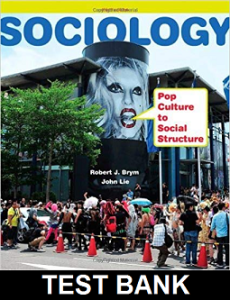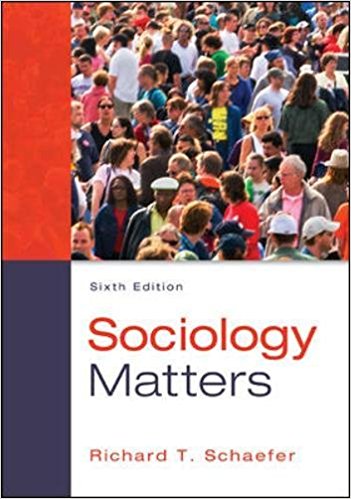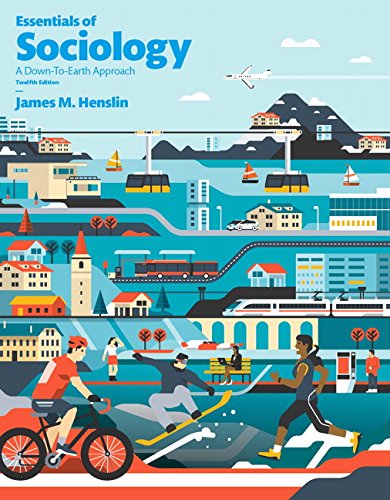Sociology Pop Culture to Social Structure 3rd Edition By Brym – Test Bank
Chapter 4 From Social Interaction to Social Organizations
Questions included in web quizzing are marked in bold
Student Learning Objectives
After reading Chapter 4, students should be able to:
- Define social interaction as people communicating face-to-face, acting and reacting in relation to one another.
- Identify how various aspects of social structure influence the texture of our emotional life.
- Recognize that in social interaction, nonverbal communication is as important as language is.
- See how emotional and material resources flow through patterns of social relations called social networks.
- Explain how social groups bind people together, impose conformity on them, and separate them from non–group members.
- Appreciate that bureaucracies can often be made more efficient by adopting “flatter,” more democratic structures.
Multiple Choice Questions
- The process of people orienting themselves to others in response to each other’s behavior is called _____.
-
- network building
- civil inattention
- social relationship
- social interaction
- sociology
ANS: dTYPE: conceptualPG: 71SOURCE: pickupLO: 1
- Studies of the role of laughter in social interaction have found that
-
- people with higher status get more laughs and lower-status people laugh more.
- people with lower status get more laughs and higher-status people laugh more.
- laughter does not seem to be related to social status.
- laughter in ordinary life is completely spontaneous.
- men and women are not likely to laugh when interacting with each other.
ANS: a TYPE: factual PG: 71 SOURCE: new LO: 2
- In Robert Provine’s research on laughing in everyday conversations in public places, he found that
-
- men laugh more than women.
- women laugh more than men.
- listeners laugh more than speakers.
- there were no significant differences between men and women.
ANS: b TYPE: factual PG: 71 SOURCE: modified LO: 2
- From Provine’s research on laughter, we may conclude that
-
- laughter is personal not sociological.
- laughter is too trivial to study.
- when it comes to humor, at least, there are no gender differences.
- laughter is not as spontaneous as we may think.
- there is no reason not to have more female standup comedians.
ANS: dTYPE: conceptualPG: 71SOURCE: pickupLO: 2
- Studies of male/female communication in general support the understanding that
-
- gender roles to not extend to social interaction.
- it is not possible to study patterns of social interaction.
- one’s social status influences patterns of social interaction.
- there are no real patterns to social interaction.
- one’s social status has little impact on patterns of interaction.
ANS: c TYPE: conceptual PG: 71 SOURCE: new LO: 2
- In general, social interaction is structured by norms, roles, and _____.
-
- social groupings
- bureaucracies
- personal characteristics
- social statuses
- the time period
ANS: d TYPE: conceptual PG: 71 SOURCE: new LO: 2














Reviews
There are no reviews yet.